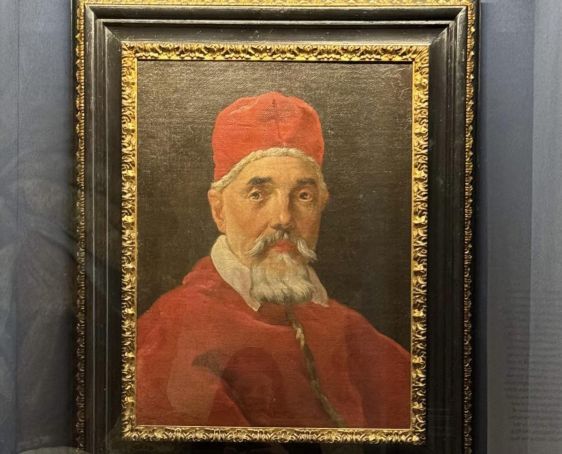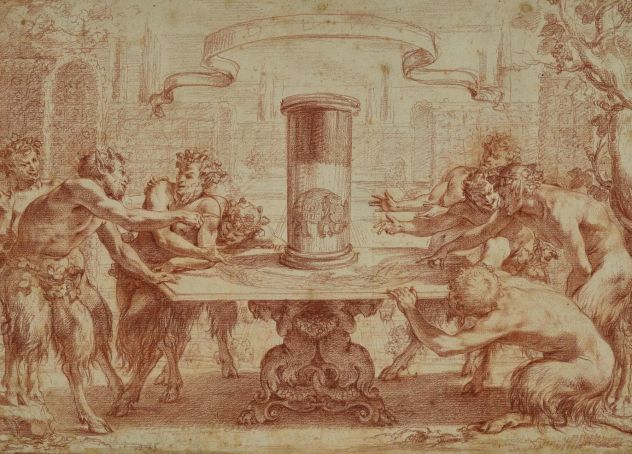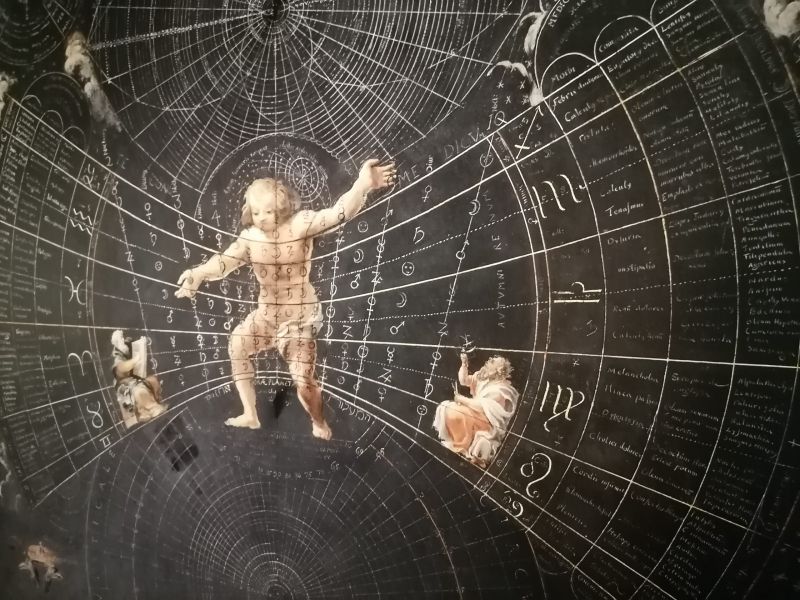Rome exhibition retraces a marvellous decade within the seventeenth century.
The primary half of City VIII’s lengthy papacy (1623-44) noticed science and the humanities proceed intertwined, the one complementing the opposite as maybe by no means earlier than.
The brand new pope enthusiastically supported each, whereas new establishments just like the Academy of the Lincei numbered astronomists (Galileo), naturalists (Federico Cesi), mathematicians and grasp painters (Pietro da Cortona) amongst its members.
Two Cultures
This pleased symbiosis of ‘the Two Cultures’, as that they had come to be known as, is widely known in a captivating exhibition at Palazzo Barberini: celestial and terrestrial globes, sundials, nocturnal clocks, telescopes, busts, architectural designs (Borromini’s), prints and work have been organized to stretch the annus mirabilis of City’s accession to a decade. Till, in fact, Galileo’s trial (1633) and the Inquisition intervened.
Galileo
However again to 1623 and Galileo’s Il Saggiatore / The Assayer. Room 2 options the work’s big frontispiece; one would possibly playfully guess magnified a dozen instances to invoke the facility of Galileo’s telescope in comparison with Hans Lipperhey’s Dutch prototype. Galileo’s membership of the Lincei Academy and the guide’s dedication to the brand new pope are eminently legible.
Again in 1612, in S. Maria Maggiore’s Pauline Chapel, Galileo’s pal, Ludovico Cigoli had used the identical instrument to depict Santa Maria standing on a moon pocked with craters and behind her a solar marred with spots, each casting doubt on the Ptolemaic/Aristotelian system whereby all planets are deemed to be good spheres.

Few had objected then. Nor in 1623 did the brand new Barberini pope, right here represented by Gaspari Mola’s bust and a portrait by Bernini, object to Galileo’s guide outlining the premise of his scientific technique, the primacy of arithmetic, the significance of remark over idea. Peaceable and enthusiastic dialogue appeared to be the order of the day. Galileo was invited to Rome six instances to enlighten the pope, a eager sky-skywatcher himself, on his new findings.
Additionally, altering scale, to debate maybe what was now seen below the microscope. Thus Galileo states, on providing his fellow Licean Federico Cisi a model of the identical instrument, his satisfaction of finding out first a flea, after which “his big satisfaction in seeing how flies stroll in mirrors.” Fleas, flies (the horsefly or tafano was initially the Barberini’s household emblem), and, in a advertising make-over, actual and/or heraldic bees. They’re throughout Rome, on the fountain on the nook of Pizza Barberini, on the perimeters of the constructing coming in.
Right here they characteristic in microscopic magnificence in a print from 1624 from Galileo’s fellow academician Frasco Stelluti’s Melissografia. Artwork and the brand new optics reconverge. To cite a textual content of the time, “Bees possess the reality of many realms, of science above all arithmetic. They’re knowledgeable in geometry, circles, squares and angles. No surveyor with all his devices might higher compass their cities about.” One would possibly say, similar to Borromini, one other Barberini artist and whose architectural designs are right here displayed.
Annus Mirabilis
Sufficient, one would possibly suppose, for a single emblem. Besides now one other key determine enters the Barberini iconography, Tommaso Campanella, priest, scientist, poet, anti-Aristotelian and long-time convict. His embattled face portrayed right here is by Francesco Cozza. Printed in the identical Annus Mirabilis (1623) was Campanella’s Utopian Metropolis of the Solar.
City, had little problem, maybe, in co-opting the Solar a picture for himself. He, “the Christian Apollo”, would likewise “fertilize the earth each dawn to nourish the bees indefatigable labour” whereas “fuelling the mind with the nectar of artwork and science.”
From bees to stars
In the meantime, shifting from bees to stars, it was on the similar pope’s behest that Campanella was free of jail. The ex-heretic was additionally, fortunately for him, an astrologer.
As soon as appointed to City’s courtroom, he was in a position to realign City’s horoscope after a hostile Spanish faction, by way of two eclipses in 1628 and 1638, had predicted the French-backed Pope’s untimely loss of life. As D.P. Walker’s Religious and Demonic Magic describes it, two males would seal themselves off in a particular room, performing somewhat doubtful astrological rituals, utilizing two candles and 5 torches to signify the planets. For sure, the pope escaped the destiny predicted, his papacy being considered one of historical past’s longest.
From science or pseudo-science to artwork: the astral conjunction on the day of his accession (5-6 August 1623) is seen (as realigned with Campanella’s assist?) within the 11 feminine figures/constellations surrounding Sapienza in Andrea Sacchi’s 1629-31 ceiling fresco Allegory of Divine Knowledge.
Barberini bees
Subsequent, from the solar to sundials. In one other room pleasure of place goes to a facsimile of Borromini’s sundial as designed by mathematician and pal of Tycho Brahe, Teodosio Rossi. (The unique construction stays in its backyard on the Quirinale. The Barberini bees perched on prime have since departed, together with different elements, dismantled perhaps after City’s loss of life and hinting that the Barberini pope was not with out opponents.) On this reproduction the identical bees have been restored.
Elongated by shadow, the tail of every factors the hours throughout 4 faces of the identical concave form that may develop into such an indicator of Borromini’s structure (cf. his San Carlino church up the street) So but once more bees, “Custodians of the doorways and observers of the heavens” the unique’s base cites Virgil’s Georgics (vv. 164-165), and omen for the papacy to come back.
Copernican imaginative and prescient
A pity that in 1633, for science anyway, the whole lot would change. Galileo had believed from his conferences with the pope that, concerning the Copernican imaginative and prescient, there was a brand new tolerance. Thus he went on to write down The Dialogue in regards to the Two Chief World Techniques, utilizing Italian to extend its readership. The enormous frontispiece is displayed right here. The issue is the third determine on the proper – Semplicius, a diehard Aristotelian into whose mouth Galileo places a sequence of whose views that seem easy to downright silly.
Worse, they carry a placing similarity to the pope’s. City, until then famous for his tolerance on astronomical issues, reacted with explosive rage, seeing in Galileo’s sarcasm a friendship betrayed. This was no time, the Pope will need to have reasoned, to look weak. All of the extra so now, on one other entrance, the Catholic armies combating within the Thirty Years Struggle within the north have been on the defensive.

Had Galileo been gifted, like that different papal protégé Bernini, with a way of diplomacy, might historical past have turned out in another way? Solely too prepared to simply accept the solar’s centrality as a metaphor for himself, would possibly the ‘Christian Apollo’ (to make use of Campanella’s moniker) have come spherical to accepting the identical heavenly physique’s centrality as a Copernican truth?
To suppose how in 1620 Pope City (then Cardinal Maffeo Barberini) had written a poem – Adulatio Perniciosa – in Galileo’s reward: “When the moon shines forth within the heaven/ and sprinkles its glittering fires/ in a serene arc….they have been found by your glass, Galileo.” As issues occurred, Galileo’s guide was solely taken off the Papal index in 1835; Galileo spent his final eight and half years in confinement. Artwork and/or right here versus science as in a doable exhibition subtitle. Plus, sure, uncooked emotion.
The final room is one thing of an addendum. If below City VIII astronomy, no less than from 1633, stepped backward because the pope ‘lapsed’ into the Aristotelian/Ptolemeic rigidity of his predecessors, below the succeeding Harmless X science, within the type of optics, continued to astound. As right here in two works of ‘anamorphic dioptics’: first is a curiously painted plank laid flat. Courtesy of a cylindrical mirror on prime watch Louis XIII, the French king, metamorphose from an amorphic if bright-coloured pancake into his true likeness.
On a grander scale the room’s back-wall reproduces in its entirety the 1646 mural in Santissima Trinità dei Monti’s cloister. At first sight it appears a curious if inconclusive illustration of some geological strata, a kind of wasteland with some branches and a river thrown in. Till you look left. Take care to not stumble upon it. That museum doorway is a strategically-placed mirror from which emerges the miraculous determine of Calabrian hermit/saint Francesco di Paola absorbed in prayer.
To quote one of many attendants in regards to the exhibition as a complete, “saloni pochi, ma bella ricca.” For these with an hour or so to spare, an actual advice certainly.
Martin Bennett
The exhibition La Città del Sole. Arte barocca e pensiero scientifico nella Roma di Urbano VIII might be seen at Palazzo Barberini, By way of delle Quattro Fontane 13, till 11 February 2024. For extra particulars see web site.

